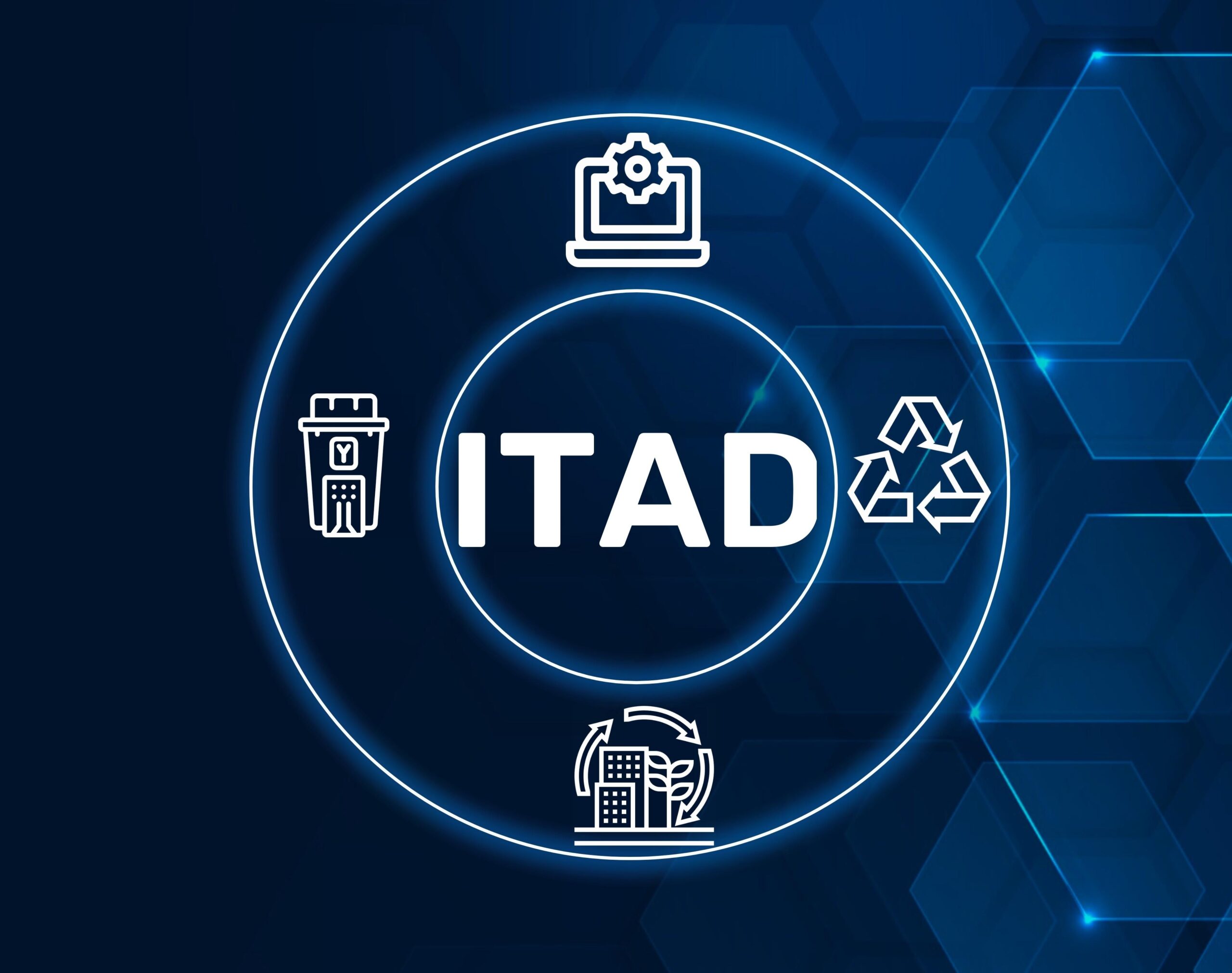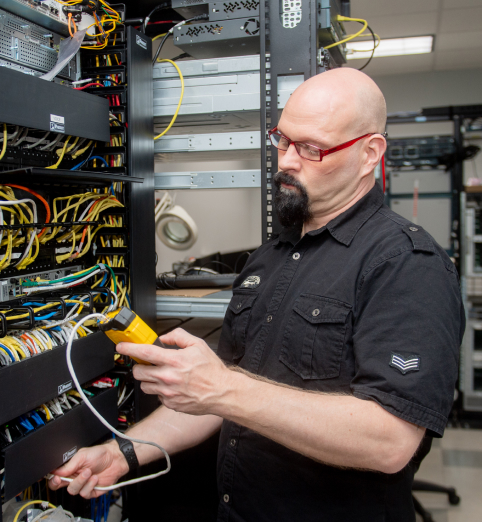ITAD and Remote Work: What Happens to Dispersed Equipment?
Although remote work has become a flexible option since COVID-19, it’s also made tracking and recovering assets far more complicated. Laptops, printers, monitors, and phones that contain sensitive data are scattered across different locations.
When employees leave or upgrade equipment, some devices remain unreturned, unmanaged, or improperly wiped. This exposes you to data security and non-compliance risks.
That’s why you need a strong IT asset disposition (ITAD) and IT asset management (ITAM) process to track, recover, and securely retire these assets.
In this article, we’ll explore how ITAD and ITAM protect your remote workspaces and what steps you can take to protect your data, reduce loss, and ensure efficient equipment turnover.
Challenges of Tracking Dispersed Assets in Remote Work
Here are the challenges companies face in remote work:
Lack of Centralized Visibility
Many companies rely on spreadsheets and employee updates to track devices. But this makes it difficult to monitor where each device is, who’s using it, and whether it’s still in active use.
Delayed or Incomplete Employee Offboarding
When employees leave, devices are often forgotten, lost, or never returned, especially if there’s no clear return process. As a result, companies struggle to wipe data securely or dispose of hardware compliantly.
Security and Compliance Risks
Untracked laptops and phones often contain sensitive data. Many companies store old devices instead of recovering value from their IT junk closet. This increases the risks of data breaches, non-compliance fines, or reputational damage.
Inventory Inaccuracies
Without real-time updates, IT teams can’t report accurately on what assets exist, where they are, or what condition they’re in. This leads to unnecessary replacements and hardware losses.
Logistical Complexity
Retrieving devices from remote locations should be simple, but oftentimes, it’s not. It requires careful coordination with employees and reliable shipping logistics. You also need multiple follow-ups to make sure the equipment is returned and in usable condition.
Higher Costs and Effort
Many companies don’t do asset recovery entirely, assuming the cost and effort aren’t worth it. But over time, this approach leads to high data risk, lost equipment, and avoidable IT expenses.
Why IT Asset Disposition Is Critical in Remote Work

Managing IT assets means you need to monitor and control each asset’s life cycle, from deployment to retirement. IT Asset Disposition (ITAD) focuses on securely retrieving, inspecting, and decommissioning end-of-life devices.
Here’s how ITAD helps you manage dispersed equipment:
Assess Asset Locations and Inventory Volume
ITAD begins by identifying where devices are located and how many are in circulation. This helps you prioritize high-volume regions, plan logistics, and estimate the scope of recovery.
To simplify this, Inteleca provides real-time asset tracking and lifecycle visibility across distributed teams. With clear data on location, ownership, and status, you can make faster, more informed decisions about which assets to recover, retire, or redeploy.
Retrieving Devices from Remote Employees
ITAD involves coordinating secure shipping logistics, providing return kits, and managing device pickup. This takes the burden off internal IT teams while making sure assets are recovered quickly and consistently.
Inteleca manages the entire recovery process, or customizes a solution based on how much support you need, from scheduling logistics to verifying return status. We recover devices securely from any location, with full chain-of-custody documentation and compliance with NIST (National Institute of Standards and Technology) and EPA (U.S. Environmental Protection Agency) standards.
Secure Data Wiping and Destruction
Devices returned from remote locations may still store company data. Inteleca performs secure data wiping using certified software called Blancco.
We also follow the industry-specific compliance standards like HIPAA (Health Insurance Portability and Accountability Act), or GDPR (General Data Protection Regulation). This helps mitigate data security risks.
Inspection and Grading for Reuse or Resale
Each device is thoroughly inspected for physical damage, performance issues, and cosmetic wear. Then, it’s graded based on predefined criteria, depending on how suitable it is for reuse, resale, or recycling.
Inteleca simplifies this process by closely inspecting and refurbishing your retired equipment. We help you maximize resale value through our trusted network secondary market partners.
Responsible Recycling of End-of-Life Equipment
For end-of-life assets, ITAD providers dismantle unusable hardware and separate components like batteries, circuit boards, and screens for proper disposal or recycling. They follow sustainable IT practices based on e-waste laws and the WEEE directive, which require businesses to handle electronic waste responsibly.
Inteleca is an R2v3-certified ITAD provider. Our team follows strict, globally recognized standards to make sure all recycling practices are secure, ethical, and environmentally friendly.
Documenting and Certifying Every Step
Tracking remote devices with clear audit trails is hard. Employees return devices from different locations, making it harder to track how assets are handled or if data was securely wiped.
A strong ITAD process actively documents each device’s serial number, condition, chain of custody, and data destruction method.
Inteleca provides detailed audit reports and certificates of data destruction and recycling. This helps you maintain full transparency and regulatory compliance.
How ITAD and ITAM Work Together for Remote Models

Although ITAD helps you securely dispose of remote assets, it can’t function effectively without IT asset management (ITAM). ITAM helps you keep detailed asset records and track device ownership across your remote workforce.
Here’s how they work together:
Expert Lifecycle Tracking
The ITAM process assigns and tracks every device issued to employees. It involves recording ownership, deployment dates, and current status for full asset visibility across remote and hybrid teams. This creates a digital trail from day one.
Maintaining Visibility Across Remote Teams
As teams operate from multiple locations, ITAM offers centralized visibility. It helps track which assets are in use, which are idle or overdue, and where each device is physically located. This reduces the risk of lost or forgotten equipment.
Flagging Assets for Return or Replacement
When employees leave, switch roles, or upgrade devices, ITAM flags those assets for return. This helps you keep track of your assets during offboarding or routine refresh cycles.
ITAD Takes Over to Handle Recovery and Disposition
Once flagged, the asset transitions into the ITAD process. The ITAD process involves inspecting your returned equipment for recycling, refurbishing, repairing, or resale.
Together, ITAM and ITAD form a closed-loop system. ITAM tracks assets throughout their active use, and ITAD handles secure, compliant end-of-life disposition. This makes sure every device is accounted for in remote workplaces.
3 Best Practices for Building a Remote-Friendly ITAD Program
Here are the best practices for building a remote-friendly ITAD program:
1. Standardize Your Remote Asset Return Policies
Create a clear, written policy that outlines how and when remote employees should return devices. You can include deadlines, instructions, and shipping carrier options to avoid confusion during offboarding.
2. Designate Internal Ownership for Asset Recovery
A successful ITAD process relies on clear accountability. Assign a dedicated team or individual, often within IT, security, or operations, to oversee remote asset recovery. This helps prevent gaps and delays, especially when employees work across different locations.
This role should manage the return process, coordinate with employees, and serve as the liaison between internal teams and your ITAD partner.
3. Plan for Exceptions and Lost Device Scenarios
Build procedures for lost, stolen, or non-returned devices. Having a predefined exception process ensures you can respond quickly, mitigate damage, and maintain control.
You can use escalation protocols or remote data lockout tools when a return is delayed to protect sensitive information. In high-risk scenarios, conduct security risk assessments to apply breach notifications or take additional compliance measures where necessary.
Bottom Line: Secure, Compliant ITAD Process for Remote Devices With Inteleca
As remote work becomes a long-term reality, managing dispersed IT assets is crucial. You need a joint ITAM-ITAD approach to track, recover, and securely retire IT equipment across a distributed workforce.
By combining proactive asset management with secure, compliant disposition, you can reduce risk, lower costs, and protect sensitive data for dispersed equipment.
Inteleca helps remote teams retire dispersed IT equipment securely and sustainably. Our team of experts tracks assets in real time, documents every device, and manages secure data wiping. From full asset lifecycle management to certified disposal and expert remarketing, we simplify remote ITAD with full chain of custody and compliance.
Contact us to get a tailored ITAD strategy for your remote workplace today.



